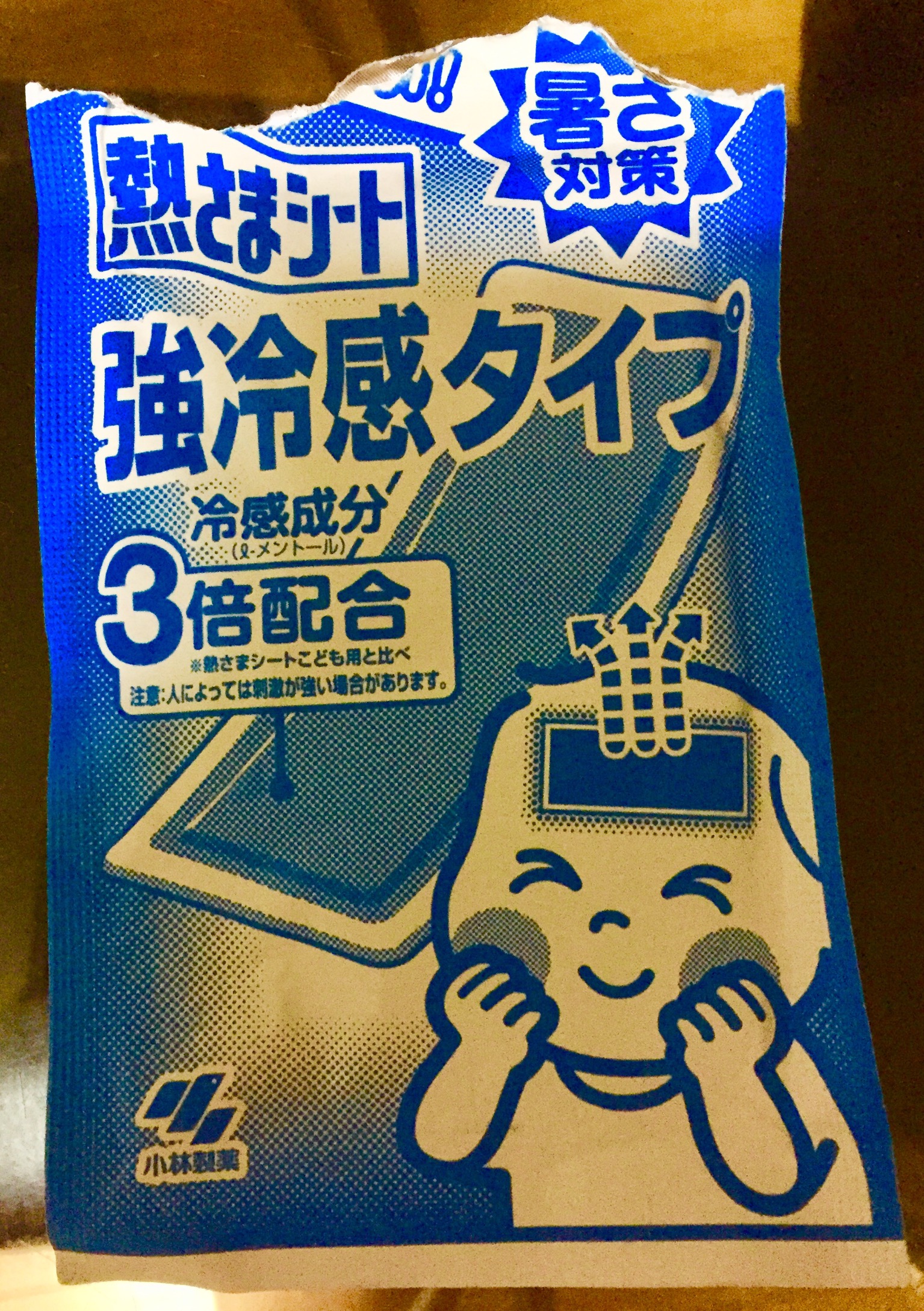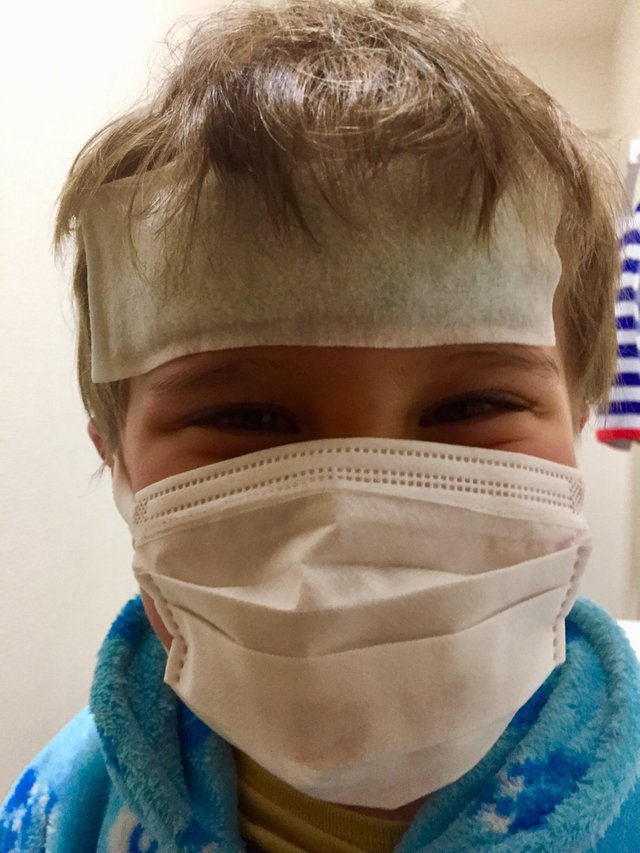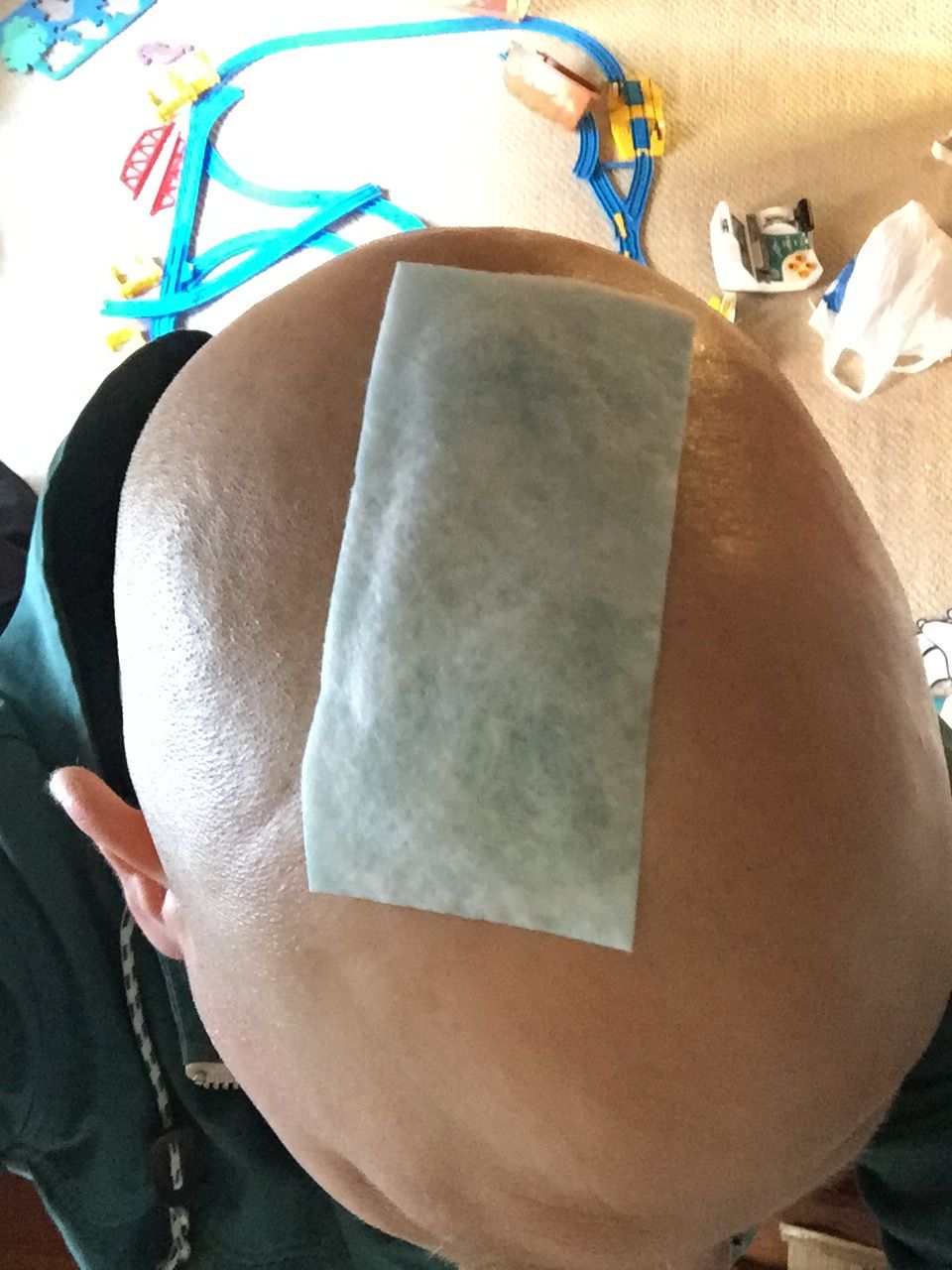This Is Japan
Explore everyday life in Japan

This is Hiya Pita, a cool-to-the-touch gel pad that actually pulls heat from your body and helps to cool the areas that it is placed. In Japan, Hiya Pita is commonly used to prevent and/or reduce the swelling that generally results from injuries like bumps, twists, sprains, etc. More than anything, though, I think that Hiya Pita is used to reduce fevers.
If you get sick and have a Japanese caretaker, it is almost certain that as soon as you get a fever, a clammy Hiya Pita will be stuck to your forehead and you will be put to bed. If you spend any lengthy amount of time in Japan, I’m quite certain that you will find the Hiya Pita experience to be unavoidable.

In winter, which is Flu Season, doctors’ offices become full of children with these lightly blue tinged pads pasted to their foreheads. In supermarkets, on trains and busses, in stations and on street corners, you will sometimes see children being carried around by their mothers with Hiya-Pitas placed on their foreheads, masks covering their mouths, and with their faces mostly covered, only their two feverish eyes peering out from the space between to the masks and these magical gel pads. These are signs to keep your distance.
Many parts of the world have strong Flu Seasons, but Japan, I feel, is particularly susceptible to Influenza.

Most likely a result of its high population density and heavy use of public transportation, many viruses run wild in Japan during the winter months. Every year, from January to March, nursery schools, elementary schools, junior high schools, high schools, and universities are ravaged by the Flu and other illnesses like micro-plasma, RS, Noro, etc.
Many of these colds and bugs produce high fevers. That, I think, is why, probably more so than any other time of year, if you are traveling in Japan in the winter months, you are likely to see somebody, somewhere, maybe only through a window, wearing a Hiya Pita pad.
Next time you are here, keep your eyes peeled.
This is an ongoing series that will explore various aspects of daily life in Japan. My hope is that this series will not only reveal to its followers, image by image, what Japan looks like, but that it will also inform its followers about unique Japanese items and various cultural and societal practices. If you are interested in getting regular updates about life in Japan, please consider following me at @boxcarblue. If you have any questions about life in Japan, please don’t hesitate to ask. I will do my best to answer all of your questions.
My grandkids have an autoinflammatory disease that is a variant of Cryopyrin Associated Periodic Syndrome, or CAPS, and the flares are marked by fever. I have purchased pads like these for them to use, and they are helpful.
Apparently they really do pull the heat away from our bodies. I saw an explanation on the news once that explained how they work. I don’t know for sure that they really work the way they were said too, but I use them from time to time. I can’t stand the initial feeling of putting them on, though. Eeeewww.
So they do have similar pads in the States. I was wondering about that.
I ordered them on-line, but they have them in Japanese stores here like Daiso.
That makes sense. I forgot that Daiso has stores in America now.
Ah yes, the worthless blue goo strips that lose their stickiness and fall off soon enough, making them less useful but more expensive than a simple wet washcloth. I have had many doctors give them to me and my kids. Then I switched my kids to an older doctor who calls them what they are and instead just uses a washcloth. He also avoids prescribing drugs and thinks modern digital thermometers are not as good as the old fashioned kind that go under your tongue for a full minute. Hmm... I wonder if he used to be a hippie. But I digress. Good post introducing the world to the gel strips. :)
I’ve definitely woken up with these stuck to my face and head before (as you can see) because they’ve fallen of my son while sleeping and found their way to me. I saw an explanation of how they worked on the news once and was impressed by the animation that accompanied the newscaster. Apparently they really do pull the heat away from our body. I always assumed they just had some kind of compound in them that kept them cool. I agree, is in a handkerchief or a cool washcloth work just as well.
Having taken a train in Tokyo last year when I went to visit I have no doubt the high levels of flu are down to people being crammed on public transport. They even pay people to push people into trains!
I know. It’s crazy, isn’t it? Tokyo doesn’t handle snow well because it doesn’t typically get very much of it. This winter has been colder and snowier than usual. You wouldn’t believe the lines of people that have filled stations this winter. One person could infect thousands so easily.
I asked my mother in Japan to send some hiepita sheets to Germany ... ;) And I was happy to see they were sold at supermarkets in Thailand.
I was wondering if they were used elsewhere around Asia. I figured that they probably were.
I can’t get used to that cold, clammy feeling you get when you first put them on your skin. I get the chills just thinking about it.
冷えピタは日本の発明として世界に誇りたい商品です。
海外で買うことが出来るそうです。海外にいるSteemianはアメリカにもタイにもあると言いました。いつからか分からないですがDaisoがアメリカのどこがで店を開催したそうです。Daisoでヒヤピタを買えます。買う人はいるでしょうかね。
私は、Daisoが海外で扱うと買う人がいると思います。
また、もしよかったら、私 @yasu24をフォローしていただけませんか?
フォローをさせて頂きました😁
わー、嬉しいありがとうございます!@boxcarblueさんと交流させていただかったので。
嬉しくて熱が出てしまうかも、、、冷えピタが必要かな?(笑)
Is this a powerful drug to treat colds
No. It’s just a pad that helps to keep your body cool, so it’s useful for treating fevers and reducing swelling.
Yes thanks for information